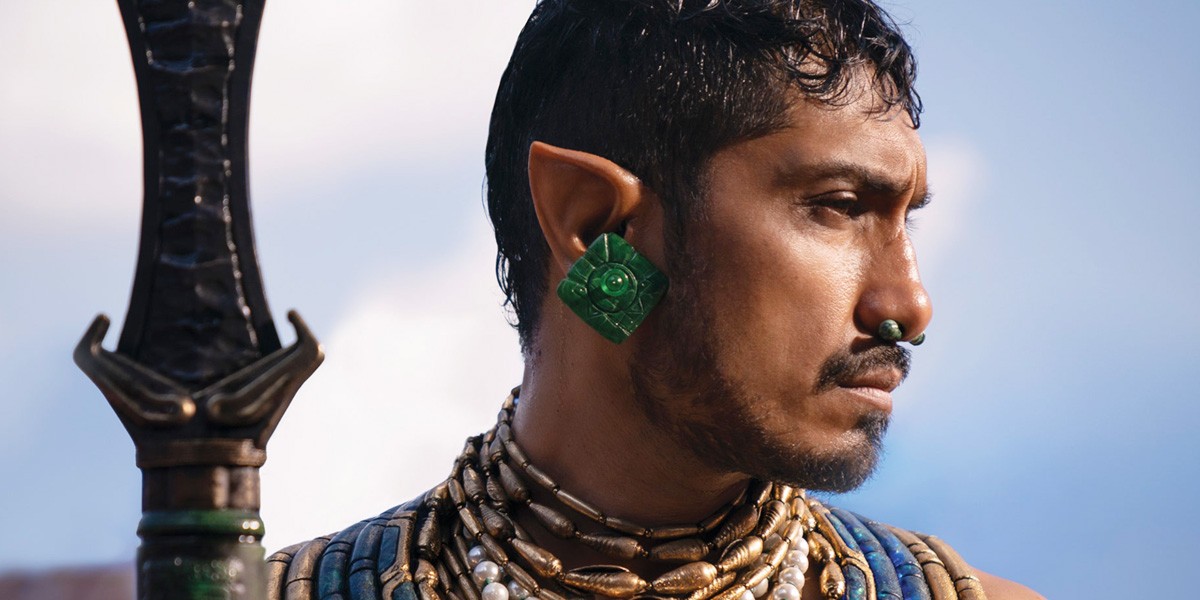Despite the absence of Chadwick Boseman in Black Panther: Wakanda Forever, the emotional presence of T’Challa was deeply felt in the movie. While Shuri stepped up to take the lead, T’Challa was still the driving factor in the story on many occasions. Ryan Coogler was able to provide us closure for losing him through Shuri’s 5 stages of grief arc. But along with the director, composer Ludwig Göransson also did a wonderful job in making us remember Boseman with his mesmerizing score. He confirmed that the music took a lot of inspiration from the late actor’s demise.
The Tough Job of Ludwig Göransson

Black Panther’s score was beyond perfect and its acknowledgment at various award events was proof of that. So, composer Ludwig Göransson was brought back for the sequel as well. He recently attended a virtual panel at Deadline’s Sound & Screen awards season event and revealed how challenging it was for him to compose the score of Black Panther: Wakanda Forever after losing Boseman.
To come up with something so beautiful, he confirmed how the Black Panther actor’s death inspired his work so heavily. Here is what Göransson had to say about it:
“It was a very difficult project because of what happened. Obviously in the first movie, so many themes and so many sounds are tied to Chad and to T’Challa. So how do we go back in doing a sequel when he’s not in it? Can I use the themes? Can I use the sounds? Everything has so much meaning to it. So it was very important heading into the [sequel], whenever we use any of the sounds from the theme from the first [movie] they are really thought out and that we put attention into the detail because of all the emotions that it would bring. It really had to feel right.”
Throughout the sequel, we did get some great reminders of T’Challa from the previous one and those felt so good because of the way Göransson used his old music.
Creating the Score for Namor

But losing the leading man wasn’t the only major challenge Göransson faced in Black Panther: Wakanda Forever. He had to come up with something good and iconic for a villain based on Mayan heritage. And the craziest part was that this Mayan culture which he wanted to represent has had so much of its history wiped out. So, it was tough for him to find inspiration to create something that was rooted in culture and sounds villainous at the same time.

Göransson went on to explain how he pulled off composing a unique score for Namor. He continued:
“Mayan music and the culture was forcibly erased, so we don’t know exactly what that music sounded like. The first thing I did when thinking how we can reimagine this sound and this music was to contact some musical archeologists in Mexico City. I went down there and started working with these experts who showed me instruments that were found in graves, like sea shells and turtle shells, clay flutes, a lot of them sound like sounds from nature. There were different kinds of whistles, a flute called the death whistle and one called the flute of truth. These were all part of the Talokan sound and they became integral to Namor. What’s interesting is like with the seashell, it’s very limited on range and the melody you can play, but the timbre resembles a horn.”
Well, it’s needless to say that Göransson did a great job with Namor as well, and his score will surely continue in all his upcoming appearances.
Black Panther: Wakanda Forever is currently playing in theatres.
Source: Deadline
Follow us for more entertainment coverage on Facebook, Twitter, Instagram, and Letterboxd.

